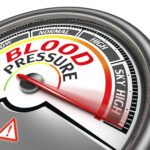Sexual Dysfunction Causes
Regarding sexual dysfunction causes, throughout history, attitudes toward sexual dysfunction, particularly erectile dysfunction, have evolved significantly. From medieval times onward, this condition has been extensively documented and approached in various ways.
During medieval times, Muslim physicians and pharmacists were pioneers in developing treatments for sexual dysfunction.
They prescribed both individual drugs and combinations thereof to address erectile issues. They also formulated topical medications for local application and devised methods for drug administration through the urethra.
Prominent figures from the 9th to the 16th centuries such as Muhammad ibn Zakariya al-Razi, Thabit ibn Qurra, Ibn Al-Jazzar, Avicenna (Ibn Sina), Averroes (Ibn Rushd), Ibn al-Baitar, and Ibn al-Nafis were instrumental in this field.
Avicenna, renowned for his influential work “The Canon of Medicine,” and Ibn al-Nafis, author of “The Comprehensive Book on Medicine,” made significant contributions to understanding and treating sexual dysfunction.
Meanwhile, traditional Chinese medicine also offered distinctive approaches to sexual dysfunction. Techniques like acupuncture and acupressure, alongside herbal remedies, were commonly employed to address these issues.
In summary, the historical perspectives and treatments for sexual dysfunction have been diverse and rooted in cultural and medical traditions spanning across different civilizations.
In modern medicine, the systematic study of sexual dysfunction began to take shape in the 1970s with the publication of “Human Sexual Inadequacy” by Masters and Johnson.
This seminal work emerged after more than a decade of research conducted at the Reproductive Biology Research Foundation in St. Louis, where they investigated 790 cases. The foundation for their findings was laid in an earlier publication, “Human Sexual Response,” released in 1966.
Before Masters and Johnson’s groundbreaking work, Sigmund Freud was a prominent figure associated with approaches to sexual dysfunction. Freudian theory posited that sexual dysfunction stemmed primarily from psychopathological factors.
This perspective generally fostered pessimism regarding the potential for resolving such disorders. Treatment approaches were predominantly psychopathological in nature, with little distinction made between the various forms of sexual dysfunction and their underlying causes.
Overall, the era preceding Masters and Johnson’s research was characterized by a psychopathological framework that viewed sexual disorders through a narrow lens, lacking the comprehensive understanding and differentiation that later studies would bring to light.
Overview
Sexual dysfunction encompasses any condition that inhibits one’s ability to derive pleasure from sexual activity. This can manifest as an inability to enjoy sexual encounters or a lack of interest in engaging in them altogether.
It is a prevalent issue with effective treatment options available, often stemming from factors such as stress, health conditions, medications, or past sexual trauma.
Sexual dysfunction can occur at any stage of the sexual response cycle, which is a four-phase model representing a person’s reaction to sexual stimulation:
- Excitement Phase: This stage involves sexual desire and arousal, encompassing activities like foreplay, erection of the penis, or swelling of the clitoris.
- Plateau Phase: Immediately preceding orgasm, characterized by increased heart rate, muscle tension, and intensified breathing. In males, this phase may involve the discharge of pre-ejaculate.
- Orgasm Phase: Marked by the sudden release of sexual tension and pleasure in the genitals, typically accompanied by ejaculation.
- Resolution Phase: The period following orgasm where the body returns to a relaxed state.
Despite the commonality of sexual dysfunction, it remains a topic often avoided in discussion. It is crucial, however, to communicate concerns with partners and healthcare providers, given the availability of treatment options.
Examples of Sexual Dysfunction
Healthcare professionals categorize sexual dysfunction into four main types:
- Desire Disorders: Characterized by a lack of sexual desire or interest in any form of sexual activity.
- Arousal Disorders: Involving the inability to become physically aroused or excited during sexual activity, despite the presence of desire. In males, this can manifest as erectile dysfunction.
- Orgasm Disorders: Refers to the delay or absence of orgasm despite adequate desire and arousal.
- Pain Disorders: Involving pain during intercourse that deters sexual activity.
Prevalence and Sexual Dysfunction Causes
Sexual dysfunction can affect individuals of any age, although it is more common in those over 40 years old. Studies indicate that between 30% and 40% of people experience sexual dysfunction at some point in their lives.
Symptoms
The symptoms of sexual dysfunction vary between genders:
- In People Assigned Male at Birth: Symptoms may include erectile dysfunction (difficulty achieving or maintaining an erection), absent or delayed ejaculation despite adequate stimulation, or premature ejaculation.
- In People Assigned Female at Birth: Symptoms may include anorgasmia (inability to achieve orgasm), vaginal dryness before and during intercourse, often due to vaginal atrophy, or difficulty relaxing vaginal muscles sufficiently for intercourse.
Understanding these distinctions is essential for effectively addressing sexual dysfunction and seeking appropriate treatment options tailored to individual needs.
Sexual Dysfunction: Causes, Complications, and Diagnosis
Sexual dysfunction encompasses a range of issues that can affect anyone, leading to dissatisfaction and potential complications in intimate relationships. Understanding its causes, implications, and diagnostic processes is crucial for effective management.
Causes of Sexual Dysfunction
Sexual dysfunction can stem from both physical and psychological factors:
Physical Causes:
- Chronic conditions such as kidney or liver failure, diabetes, heart diseases, and neurological disorders like multiple sclerosis or nerve damage.
- Hormonal imbalances due to conditions like menopause or certain cancers.
- Medications such as those for treating cancer, depression, hypertension, and allergies, which may have sexual side effects.
- Substance use disorders and alcohol misuse can also contribute.
Psychological Causes:
- Emotional factors such as stress, anxiety, depression, and relationship issues.
- History of sexual trauma or abuse.
- Concerns about body image or performance anxiety.
- Feelings of guilt or depression can also play a significant role.
Medications That Can Cause Sexual Dysfunction
Various medications, both prescription and over-the-counter, can lead to sexual side effects:
Nonprescription Medications:
- Some antihistamines and decongestants (e.g., cetirizine, loratadine, diphenhydramine) commonly used for allergies or colds may cause erectile dysfunction or ejaculation problems.
Prescription Medications:
- Antidepressants such as tricyclic antidepressants (e.g., amitriptyline, doxepin), monoamine oxidase inhibitors (e.g., phenelzine, tranylcypromine), and selective serotonin reuptake inhibitors (e.g., fluoxetine, sertraline) can affect libido, arousal, and orgasm.
- Antipsychotic medications (e.g., thioridazine, haloperidol) and anti-mania medications like lithium carbonate.
- Antihypertensive medications including diuretics, alpha-blockers, and beta-blockers commonly prescribed for high blood pressure can contribute to erectile dysfunction.
Complications of Sexual Dysfunction
The consequences of sexual dysfunction extend beyond physical symptoms to impact overall quality of life:
- Dissatisfaction with one’s sex life can lead to feelings of loneliness, frustration, and strain in intimate relationships.
- Problems with intimacy and communication with sexual partners may arise.
- Addressing sexual dysfunction is essential for maintaining emotional well-being and overall health.
Diagnosis and Tests
Diagnosing sexual dysfunction involves a comprehensive approach:
- Patients typically recognize interference with their sexual enjoyment or their partner’s satisfaction.
- Healthcare providers begin with a thorough history of symptoms, including emotional and relationship aspects.
- Physical examination and, occasionally, diagnostic tests help rule out underlying medical conditions contributing to dysfunction.
- Lab testing plays a limited role unless specific medical conditions are suspected.
- Understanding attitudes towards sex, exploring psychological factors, reviewing medication usage, and assessing lifestyle habits are crucial steps in determining appropriate treatment options.
Sexual dysfunction is a complex issue influenced by various physical, emotional, and relational factors.
Recognizing its causes, potential complications, and seeking timely diagnosis and treatment are essential for improving sexual health and overall well-being.
Management and Treatment of Sexual Dysfunction
Sexual dysfunction can often be effectively managed through various approaches that target underlying physical or psychological factors. Here’s an overview of treatment options:
Medication:
- For Erectile Dysfunction (People AMAB): Medications such as sildenafil (Viagra®), tadalafil (Cialis®), vardenafil (Levitra®, Staxyn®), and avanafil (Stendra®) are commonly used to assist in achieving and maintaining erections by enhancing blood flow to the penis.
- For Low Sexual Desire (People AFAB): Medications like flibanserin (Addyi®), bupropion (Wellbutrin®), buspirone (BuSpar®), and bremelanotide (Vyleesi®) can help increase libido. Hormone therapy may also be beneficial for individuals experiencing low sexual desire due to menopause.
Mechanical Aids:
- For Erectile Dysfunction: Vacuum devices and penile implants are mechanical options that can aid in achieving erection. Similarly, there are vacuum devices available for individuals AFAB to enhance arousal.
- For Vaginal Narrowing (People AFAB): Dilators can be used to alleviate discomfort caused by vaginal narrowing due to menopause. Additionally, vibrators can aid in enhancing sexual enjoyment and achieving orgasm.
Sex Therapy:
- Sex therapists provide specialized counseling to address sexual issues that may not be fully resolved through medical treatments alone. They also serve as marital counselors, helping couples improve intimacy and communication in their relationships.
Behavioral Treatments:
- Techniques like behavioral modifications and self-stimulation exercises can help address issues related to arousal and orgasm dysfunction. These treatments often involve identifying and modifying harmful behaviors within the relationship dynamics.
Psychotherapy:
- Therapy with a trained counselor can be beneficial for addressing psychological factors contributing to sexual dysfunction, such as past sexual trauma, anxiety, guilt, or poor body image.
Education and Communication:
- Learning about sexual behaviors, responses, and techniques through education can alleviate anxieties and misconceptions about sexual function. Open communication with partners about needs and concerns is essential for overcoming barriers to a healthy sex life.
Prevention:
- While sexual dysfunction may not be entirely preventable, early recognition and seeking appropriate help can minimize its impact. Awareness of symptoms and prompt intervention are crucial in managing and treating sexual dysfunction effectively.
Outlook / Prognosis:
- The prognosis for sexual dysfunction largely depends on identifying and addressing the underlying causes. With appropriate treatment, many individuals experience significant improvement in their sexual health and quality of life.
Living With:
- It’s advisable to consult a healthcare provider if sexual dysfunction persists for three months or longer, especially if it starts affecting relationships or causing distress. A thorough medical evaluation, including history-taking and medication review, helps determine the appropriate course of treatment.
In conclusion, sexual dysfunction is a complex condition that can be successfully managed through a combination of medical treatments, therapy, and behavioral strategies tailored to individual needs.
Seeking timely help and maintaining open communication with healthcare providers are crucial steps towards achieving a satisfying and healthy sexual life.

A graduate of Computer Science and Information Management Technology. Diploma – Caregiving, Certificates – Dementia and Diabetes Awareness and Management. A researcher, blogger, songwriter, singer and acoustic guitarist. Born in an environment where natural talents such as healing are imparted at our natural birth. This natural talents of healing is the result of our genetic inheritance and the training from family environment.














